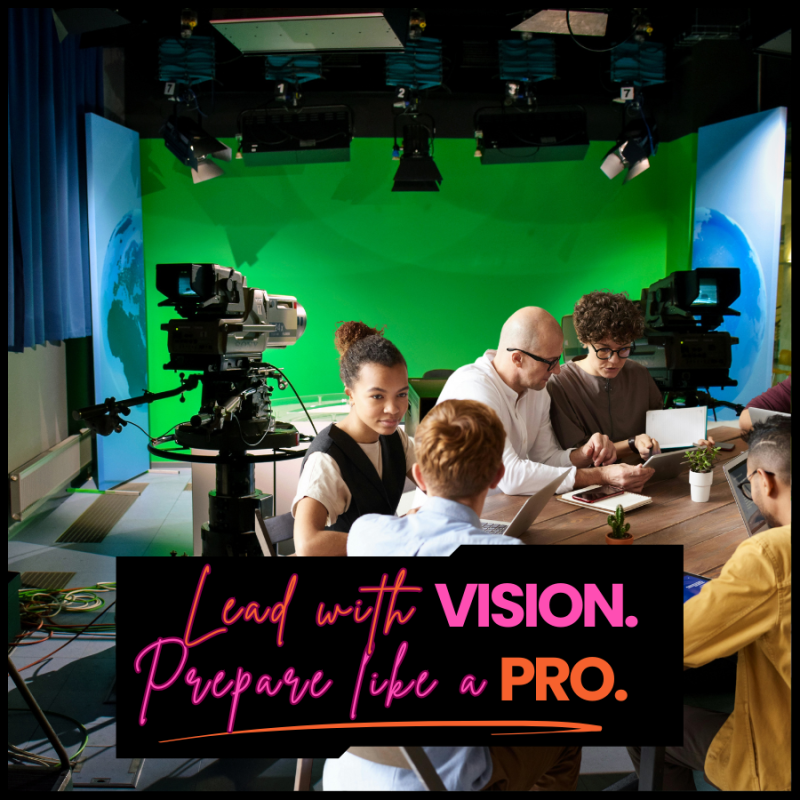For many indie filmmakers, the short film is the beginning—a proof of concept, a festival. Your first production meeting can feel intimidating—especially if you’re leading it. But whether you’re a first-time director or stepping into a producing role, being prepared will not only earn you respect but also set your film up for success.
This guide breaks down exactly what you need to bring, how to run the meeting smoothly, and how to make sure everyone leaves feeling aligned and motivated.
1. Know the Purpose of the Meeting
A production meeting isn’t just a meet-and-greet. It’s about aligning everyone—from your DP to your sound mixer—on the creative vision, logistics, and timeline.
🎯 Your goal: Build clarity and confidence across departments while ironing out any early friction points.
2. Bring the Right Documents

Don’t show up empty-handed. Come armed with materials that clearly communicate your project and expectations.
🗂️ Essentials to prepare:
- Shooting script (updated and watermarked if necessary)
- Shot list or storyboards
- Preliminary production schedule
- Budget overview (especially if decisions hinge on it)
- Location list and photos
- Department-specific breakdowns (e.g., costume, props, special effects)
- Contact sheet for cast and crew
Bonus: A printed agenda helps keep the meeting on track—and shows you mean business.
3. Set the Tone with Your Vision
You’re not just a logistical coordinator—you’re the visionary. Whether you’re directing, producing, or both, use this time to reinforce your creative intent.
🎬 Share:
- Mood boards or visual references
- Tone and pacing expectations
- Performance style or acting approach
- The “why” behind your film
People rally around purpose. Your team will care more when they know what drives the story.
4. Encourage Each Department to Speak

A great production meeting is a two-way conversation. After sharing your vision, open the floor.
👥 Ask department leads to:
- Share their needs or concerns
- Flag potential conflicts or overlaps
- Offer creative input early
Example: If your production designer and cinematographer talk now, it avoids color palette clashes on set.
5. Clarify the Chain of Communication
Nothing stalls a production like confusion over who handles what.
📞 Establish:
- Department heads and decision-makers
- How updates will be communicated (Slack, email, call sheets)
- Who to go to with budget questions, scheduling issues, or location access
This prevents miscommunication and keeps things running smoothly.
6. Cover the Basics Others Might Overlook

The small stuff becomes big stuff on set.
✅ Run through:
- Call time procedures
- Parking and transportation
- Craft services/meal plans
- On-set safety rules
- COVID protocols (if still applicable)
Pro Tip: Use a checklist and assign someone to take meeting notes.
7. Create a Culture of Collaboration
You’re not just building a film—you’re building a temporary creative family.
💡 Leadership tip:
- Thank everyone for being there
- Acknowledge the work ahead
- Invite ideas and collaboration
- Let people know they’re valued
When people feel seen and supported, they give their best work.
8. End With Clear Next Steps
Don’t just fade out when the meeting’s over.
📌 Wrap with:
- A summary of decisions made
- Who’s responsible for what
- When the next meeting or checkpoint will be
- Distribution of meeting notes and documents
Follow-through is what separates amateur from pro.
Confidence = Preparation
Even if you’re new to leading a production, preparation builds confidence—and that confidence is contagious. When you show up clear, organized, and collaborative, your team will follow your lead.
Your first production meeting can be the moment everything starts to feel real. Make it count.
Transformational Screenwriting

At the Independent Film Arts Academy (IFAA), we believe strong storytelling begins long before the first scene is shot. Want to elevate your script and lead with confidence?
Check out Transformational Screenwriting on Amazon and learn how to craft emotionally compelling stories that inspire great performances.

